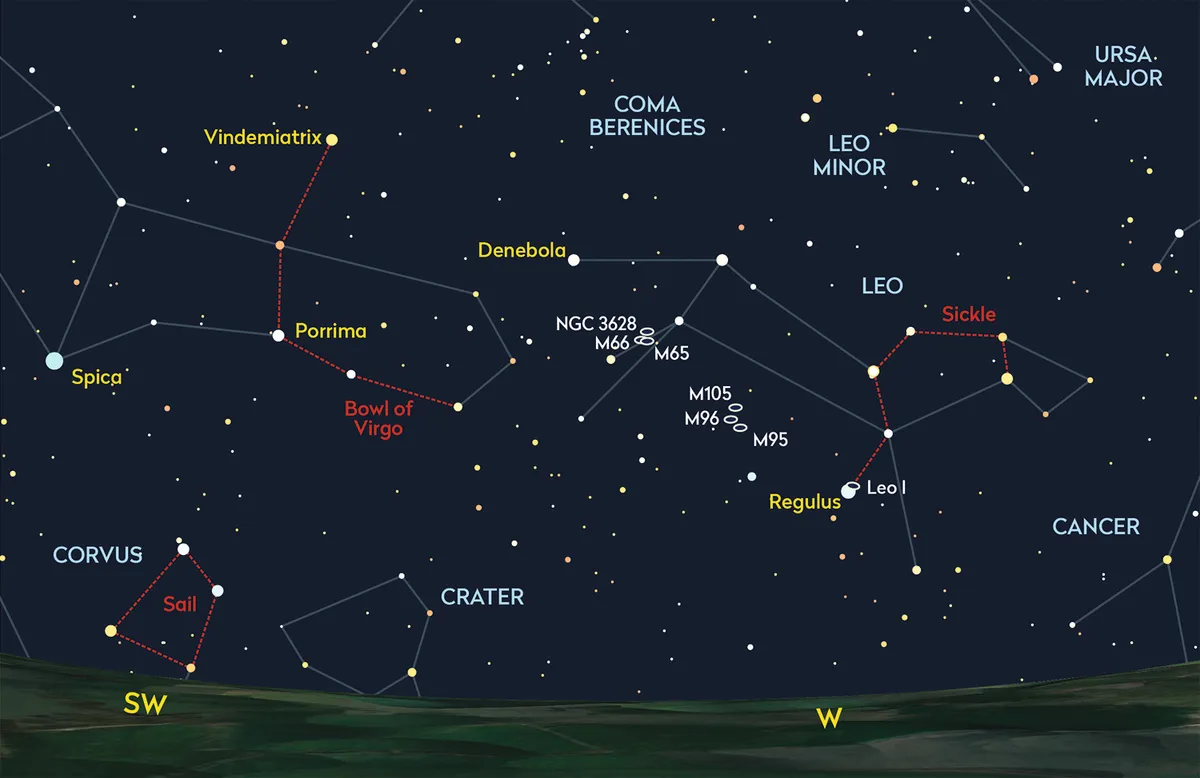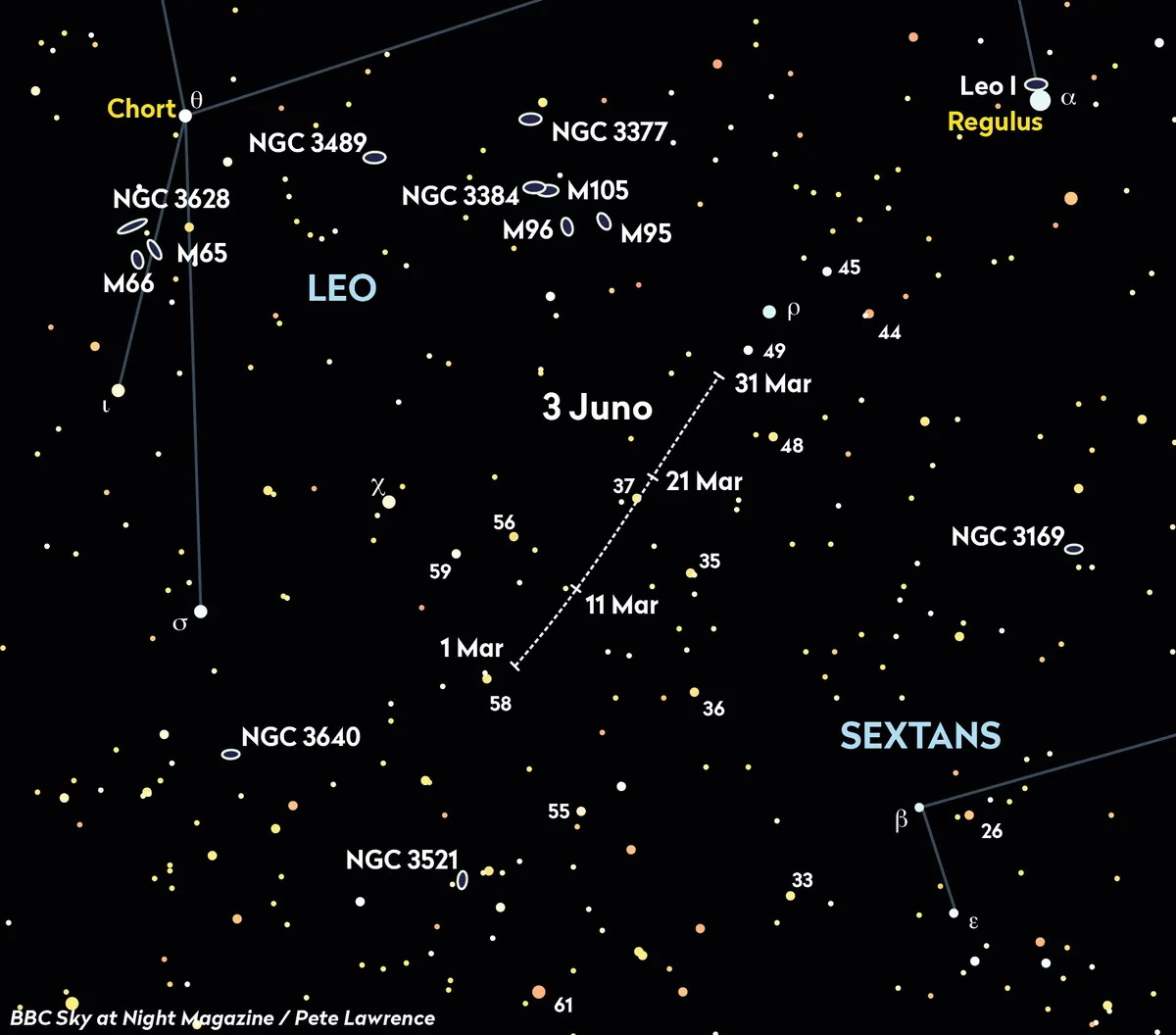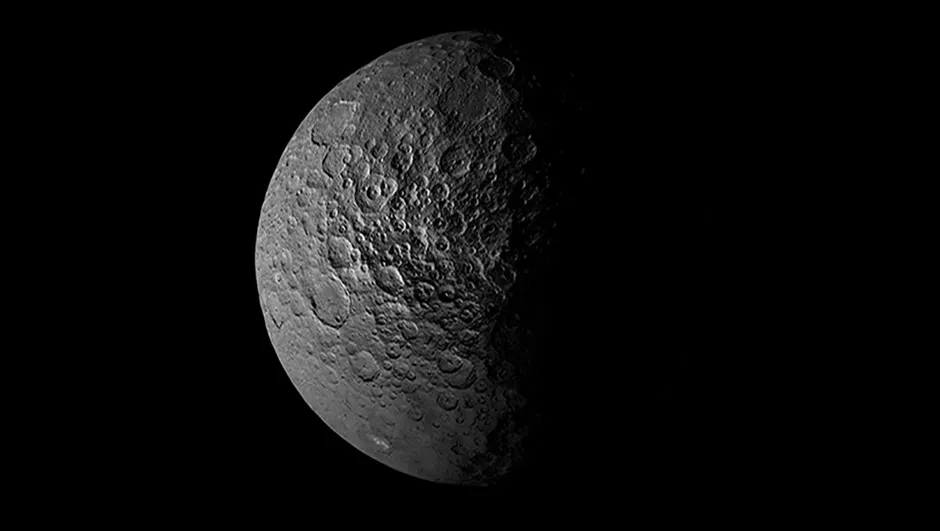Asteroid 3 Juno reaches opposition on 3 March, when it can be found in southern Leo, near the border with Sextans, shining at mag. +8.6.
It starts the month close to mag. +4.8 58 Leonis and shining at mag. +8.8. This makes it potentially visible through binoculars, but best seen using a small telescope at low magnification.
Asteroid 3 Juno heads northwest, clipping the border between Leo and Sextans.
Find out what comets and asteroids are in the sky tonight

On 16 March, the asteroid crosses into Leo, very close to mag. +6.4 37 Sextantis.
Its magnitude will have dimmed to +9.1 and it will continue to dim as it tracks northwest.
By the end of March, it will be located less than a degree east-southeast of mag. +5.7 49 Leonis, having faded to mag. +9.5.

Facts about 3 Juno
3 Juno is the 11th-largest asteroid, with a mean diameter of 247km.
It’s the second-largest stony (S-type or siliceous) asteroid (after 15 Eunomia) and contains 1% of the entire mass of the asteroid belt, and around 3% that of the largest body in this orbital region, the dwarf planet Ceres.
Juno’s elliptical orbit is highly eccentric, and takes it out as far as 3.35 AU from the Sun and in as close as 1.99 AU.
The entire orbit takes 3.36 years and is quite inclined, with a tilt of 12° to the ecliptic plane.
It’s a highly studied object; observations suggesting it has a massive 100km impact crater on its surface.
Spectral analysis suggests it may be the source of chondritic or stony meteorites that have impacted Earth.

How to find and observe asteroid 3 Juno
Asteroid 3 Juno's location in southern Leo this month, combined with a small-telescope-favourable magnitude, makes this an ideal time to try to locate it.
The usual technique for finding such bodies is to image or sketch the suspected field over several nights, comparing results to look for some object that is moving between observations.
Have you managed to observe or image Asteroid 3 Juno? Let us know by emailing contactus@skyatnightmagazine.com
